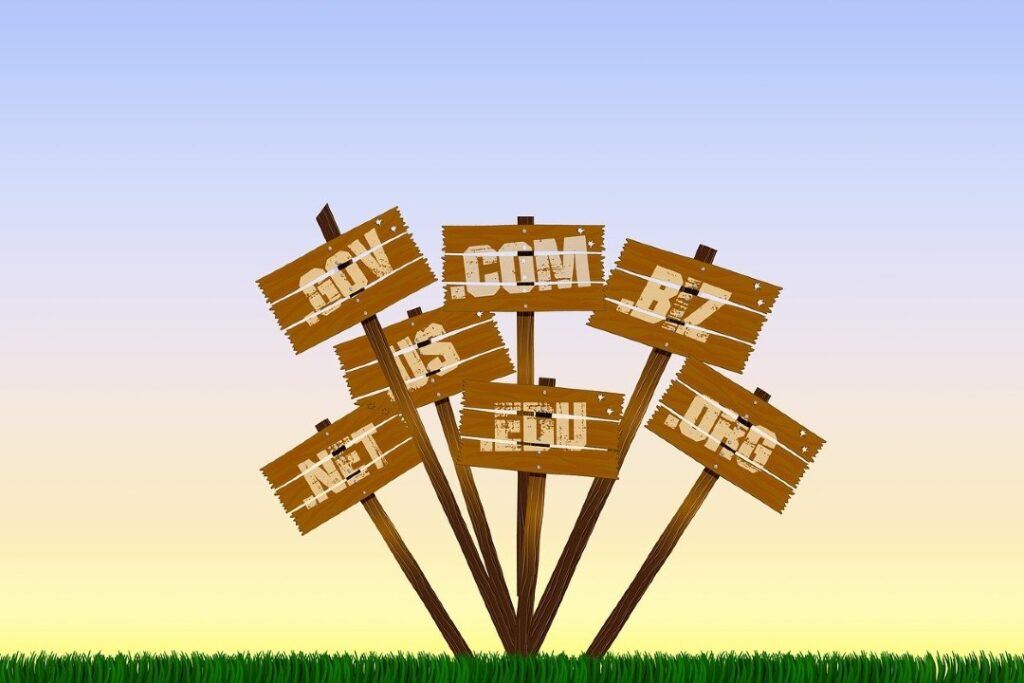Domain flipping is the practice of buying domain names at a low price and selling them at a higher price for profit. It’s a speculative venture that requires research, strategy, and patience. Below is a comprehensive guide to domain flipping, covering the process, strategies, tools, and tips to maximize profits.
What is Domain Flipping?
Domain flipping involves purchasing domain names (e.g., example.com) with the intent to resell them at a profit. Domains are digital real estate, and their value depends on factors like brandability, market demand, keywords, and trends. Successful flippers identify undervalued or high-potential domains, hold them, and sell when demand increases.
Why Domain Flipping?
Low Entry Cost: Domains can be bought for as little as $10–$20 annually.
High Profit Potential: Some domains sell for thousands or millions (e.g., Voice.com sold for $30 million in 2019).
Flexible Work: Can be done part-time or full-time from anywhere.
Scalable: You can flip one domain or build a portfolio of thousands.
However, it’s not a get-rich-quick scheme. Success requires research, timing, and sometimes luck.
How to Profit from Domain Flipping?
1. Understand the Domain Market
Before diving in, learn what makes a domain valuable:
- Short and Memorable: Short domains (e.g., 3–10 characters) are highly sought after.
- Brandable: Catchy, unique names (e.g., Google.com, Zoom.com) appeal to businesses.
- Keyword-Rich: Domains with popular keywords (e.g., BuyCars.com) attract buyers in specific niches.
- Top-Level Domains (TLDs): .com is king, but .co, .io, and .ai are gaining traction.
- Trends and Niches: Domains tied to emerging industries (e.g., AI, crypto, biotech) can be lucrative.
- No Hyphens or Numbers: These reduce value (e.g., Buy-Cars.com is less valuable than BuyCars.com).
Action: Research recent domain sales on platforms like NameBio.com or DNJournal.com to understand pricing trends.
2. Find Domains to Buy
There are several ways to source domains for flipping:
a. Register New Domains
- Use domain registrars like GoDaddy, Namecheap, or Dynadot to buy unregistered domains.
- Look for short, brandable, or keyword-rich names.
- Tools like Nameboy or LeanDomainSearch can help generate domain ideas.
- Cost: $10–$20/year for .com domains, though premium TLDs (.ai, .co) may cost more.
b. Buy Expired or Dropped Domains
- Expired domains are those whose owners failed to renew. They often have existing traffic, backlinks, or SEO value.
- Platforms like GoDaddy Auctions, NameJet, or DropCatch list expired domains.
- Use ExpiredDomains.net to filter domains by metrics like age, backlinks, or keywords.
c. Purchase from Domain Marketplaces
Buy domains listed for sale on platforms like:
- Flippa: Marketplace for domains and websites.
- Sedo: Large domain auction platform.
- Afternic: Network for domain sales.
- GoDaddy Auctions: Popular for both expired and premium domains.
Look for undervalued domains with potential for resale.
d. Hunt for Hidden Gems
- Use tools like EstiBot or GoDaddy’s Domain Appraisal to estimate domain value.
- Check social media (e.g., X posts) or forums for owners selling domains privately.
- Monitor industry trends (e.g., AI, Web3, sustainability) to snag relevant domains early.
Tip: Focus on niches you understand (e.g., tech, fitness, finance) to better predict demand.
3. Evaluate Domain Value
Before buying, assess a domain’s potential:
- Market Demand: Is the domain relevant to a growing industry or niche?
- SEO Potential: Check for backlinks, domain authority (DA), and traffic using tools like Ahrefs or Moz.
- Brandability: Is it catchy, memorable, or pronounceable?
- Commercial Appeal: Can businesses use it for branding or marketing?
- TLD Quality: .com is most valuable, followed by .co, .io, or niche TLDs like .shop or .tech.
- Legal Risks: Avoid domains that infringe trademarks (e.g., NikeStore.com).
Tools:
- EstiBot: Free domain appraisal.
- GoDaddy Domain Appraisal: Estimates market value.
- NameBio: Tracks historical domain sales.
- Ahrefs/Moz: Checks SEO metrics like backlinks and DA.
4. Buy Domains Strategically
- Set a Budget: Start small (e.g., $100–$500) to minimize risk.
- Negotiate: When buying from marketplaces or private sellers, haggle to lower the price.
- Bulk Buying: Purchase multiple domains in a niche to diversify your portfolio.
- Avoid Overpaying: Don’t buy premium domains unless you’re confident in their resale value.
Pro Tip: Register domains for multiple years to show commitment and avoid losing them to expiration.
5. Add Value to Your Domains
Increase a domain’s resale value by:
- Building a Website: Create a simple landing page to showcase the domain’s potential (e.g., a “For Sale” page or a niche blog).
- SEO Optimization: Generate backlinks or content to boost the domain’s authority.
- Branding: Design a logo or mockup to show how the domain could be used.
- Parking: Use domain parking services (e.g., Sedo, GoDaddy CashParking) to earn ad revenue while waiting for a buyer.
6. Sell Your Domains
There are multiple ways to sell domains for profit:
a. List on Marketplaces
- List your domains on platforms like:
- Sedo
- Afternic
- Flippa
- GoDaddy Auctions
- Set a “Buy It Now” price or allow bidding.
- Include a compelling description highlighting the domain’s value (e.g., niche relevance, SEO metrics).
b. Outreach to Buyers
- Identify potential buyers (e.g., businesses, startups, or marketers in the domain’s niche).
- Use LinkedIn, email, or X to pitch your domain directly.
- Be professional and highlight why the domain suits their brand.
c. Auctions
- Enter your domain in auctions on NameJet, GoDaddy, or DropCatch for competitive bidding.
- Auctions can drive up prices but may take longer.
d. Broker Services
- Hire a domain broker (e.g., Sedo’s brokerage service) for high-value domains. They charge a commission (10–20%) but handle negotiations.
e. Social Media and Forums
- Promote your domain on X, Reddit (e.g., r/Domains), or domain forums like NamePros.
- Engage with communities to find buyers or partners.
Pricing Strategy:
- Fixed Price: Set a realistic price based on appraisals and market trends.
- Negotiable: Be open to offers but know your minimum acceptable price.
- Premium Pricing: For high-value domains, aim for 10x–100x your purchase price.
7. Maximize Profits
Hold for Appreciation: Domains tied to emerging trends (e.g., AI, crypto) may increase in value over time.
Bundle Domains: Sell related domains as a package to attract buyers.
Reinvest Profits: Use earnings to buy more domains or invest in higher-value ones.
Track Expenses: Account for registration fees, marketplace commissions (5–20%), and transfer costs.
Tools for Domain Flipping
Domain Registrars: GoDaddy, Namecheap, Dynadot, Google Domains.
Marketplaces: Flippa, Sedo, Afternic, GoDaddy Auctions.
Research Tools: NameBio, EstiBot, ExpiredDomains.net, DNJournal.
SEO Analysis: Ahrefs, Moz, SEMrush.
Trend Analysis: Google Trends, X posts, industry blogs.
Portfolio Management: Efty or DomainManage to track your domains.
Tips for Success
Start Small: Begin with low-cost domains to learn the market.
Stay Patient: Some domains may take months or years to sell.
Avoid Trademark Issues: Don’t buy domains tied to existing brands or trademarks.
Monitor Trends: Follow industries like AI, blockchain, or green tech to buy relevant domains early.
Network: Join domain communities on NamePros or X to learn from experienced flippers.
Diversify: Don’t put all your money into one domain; build a varied portfolio.
Risks and Challenges
High Competition: Popular niches are crowded, and premium domains are expensive.
No Guaranteed Sales: You may hold domains for years without a buyer.
Renewal Costs: Annual fees (e.g., $10–$50/domain) add up if unsold.
Legal Issues: Trademark disputes can lead to domain loss or lawsuits.
Market Volatility: Trends change, and domain values can drop.
Domain flipping can be a lucrative side hustle or full-time business, but it requires research, patience, and strategic buying/selling. Start small, learn the market, and scale as you gain experience.



